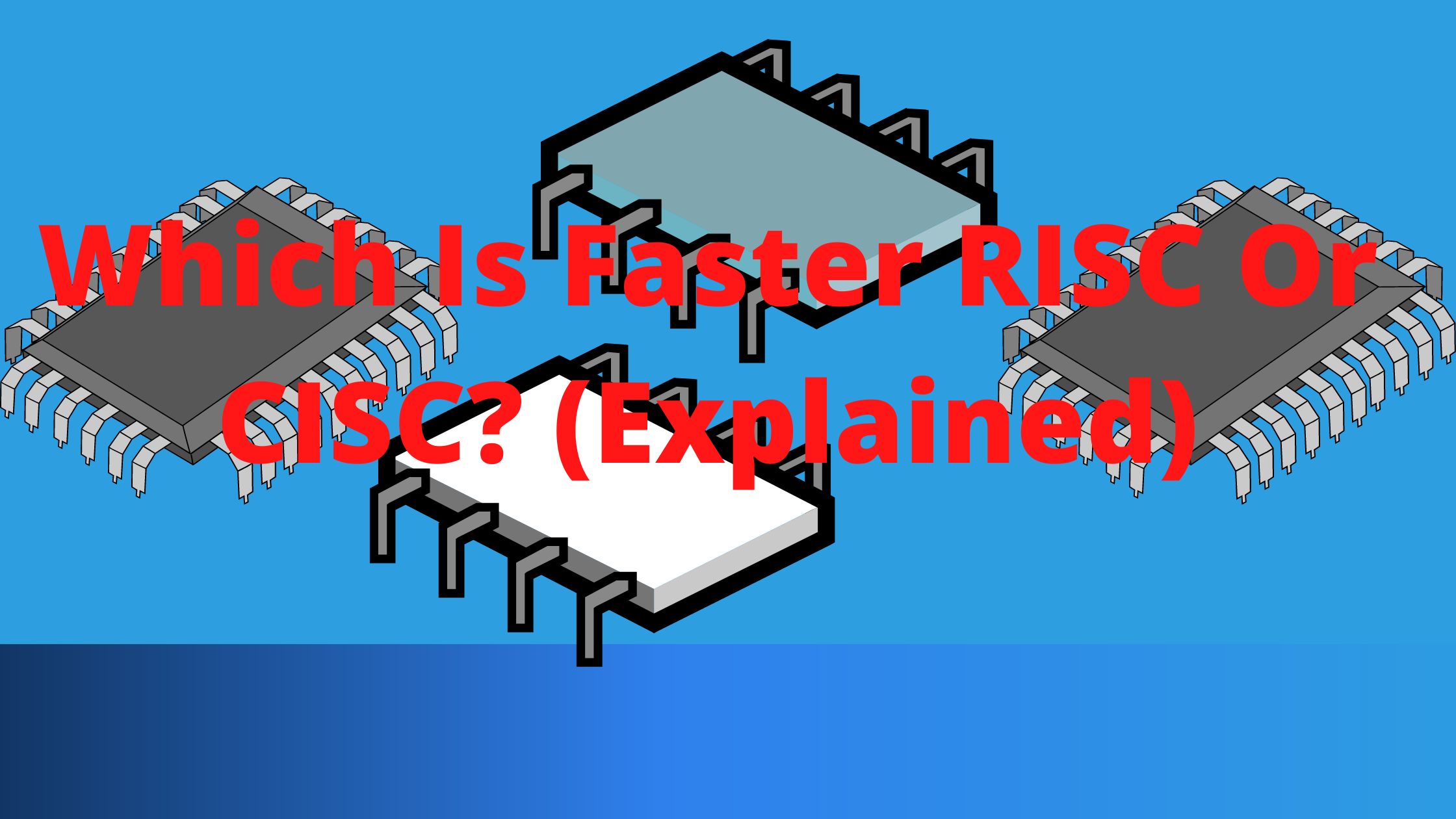Which Is Faster RISC Or CISC? Processor architecture, which includes instruction set architecture, is required for the development of machine-level programs that carry out any mathematical or logical operations.
An interface between hardware and software is provided by instruction set architecture. It gets the processor ready to carry out user-given actions like execution, deleting, etc.
The architecture of the processor’s instruction set determines how well it performs. Since a processor must function with both hardware and software, it can be difficult to determine which should be more important.
Major corporations like Intel argue that hardware should be more important than software in computing. Apple contends that processor architecture should be heavily influenced by software.
The two main architectures for instruction sets are:
- CISC (Complex Instruction Set Computing)
- RISC (Reduced Instruction Set Computing)
CISC Structure
Assembler language was used in the early days to program computers, and memory access is similarly slow. Compilers have to write lengthy sequences of machine code to do sophisticated arithmetic calculations.
This prompted the architects to create an architecture that accesses memory less frequently and places less strain on the compiler. This resulted in a complex but very powerful instruction set.
This design uses cache memory for holding both data and instructions. As a result, they go along the same path for both data and instructions.
The format of the CISC’s instructions might vary in length. As a result, the number of clock cycles needed to carry out the instructions can vary.
In CISC, a microprogram that has a series of microinstructions executes the instructions.
Let’s look at an instance: You may calculate the sum of two numbers as follows.
ADD 1:1 , 2:2
- The instruction that is being displayed above is broken up into smaller instructions.
- It initially saves the data in two distinct registers, decodes, and then executes.
- This outcome is kept in the MBR register.
- The two registers were then automatically cleared after that.
- An intricate circuitry is therefore needed to carry out all of these steps.
Benefits of the CISC Architecture
- Microprogramming is substantially less expensive and easier to deploy than hard-wiring a control system.
- The chip’s architecture makes it simple to add new commands without altering the way the instruction set is organized. This is because the architecture makes use of multipurpose hardware to execute commands.
- This design effectively utilizes main memory since fewer instructions are needed to complete a given task due to the complexity (or greater capability) of the instructions.
- Since the microprogram instruction sets can be constructed to match the syntax of high-level languages, the compiler need not be overly complex.
Drawbacks of CISC Architecture
- Early-generation processors are a part of CISC processors’ subgroups in new or following versions (succeeding versions). As a result, each processor generation saw an increase in the complexity of the chip hardware and instruction set.
- Because of the slower clock speed, the machine’s overall performance is decreased.
- The intricate hardware and on-chip software used in CISC design to carry out a variety of tasks.
CISC processor examples include the IBM 370/168, Intel 80486, and VAX 11/780.
RISC architecture (Reduced Instruction Set Computer)
Although CISC uses less memory and a compiler, the more complicated hardware needed to implement the complex instructions makes it more expensive.
The processor’s instruction set is condensed in RISC architecture to speed up execution. It uses a limited number of highly optimized instructions, most of which are register-to-register operations.
A reduced number of instructions is used, which speeds up the execution.
This executes any instruction using the pipeline mechanism.
The fetch, decode, and execute steps of instruction can all be completed by the processor at once thanks to the pipelining technique.
In most cases, the second instruction’s execution doesn’t begin until the first one has finished. However, in a pipeline technique, multiple phases of each instruction are carried out concurrently.
The following instruction starts in the first stage when the first stage of the first instruction is finished. Until all of the instructions have been carried out, this process continues.
RISC processor examples
Alpha, AVR, ARM, PIC, PA-RISC, and power architecture are all included in this architecture.
Benefits of RISC architecture
- Due to their streamlined instruction set, RISC computers frequently perform two to four times better than CISC processors.
- Due to a smaller instruction set, this design requires less chip area. This allows for the placement of additional functions, such as memory management units and floating point arithmetic units, on the same chip.
- This architecture makes use of smaller chips with more components on a single silicon wafer, lowering the cost per chip.
- Because of their straightforward architecture, RISC computers can be developed more quickly than CISC CPUs.
- When compared to CISC processors, RISC processors use more registers to hold and pass instructions, which results in a higher instruction execution rate.
Problems with RISC architecture
The code that is being executed determines how well a RISC processor performs. When a compiler does a bad job of scheduling instruction execution, the processor spends a lot of time waiting for the first instruction’s result before moving on to the next instruction.
To feed diverse instructions to RISC processors, very quick memory systems are needed. In most RISC-based systems, a sizable memory cache is often provided on the processor.
RISC and CISC comprised
CISC |
RISC |
| Hardware is given significant weight in CISC architecture. | Software is given more weight in RISC architecture. |
| intricate directions | shortened instructions |
| it directly accesses memory | It needs registers |
| The CISC processor has simple coding. | More lines are needed for RISC processor coding. |
| To execute, several cycles are necessary. | One cycle is required to complete. |
| The microprogram contains the complexity. | Compiler complexity is the issue |
Related Article:
How Fast is single GPU Core compared to CPU Core? (Explained)

